“Let’s look at the 50’s....That’s where you’ll see a clear polarization of society...to be an artist was to be an outlaw. It wasn’t a pose or a style. You really were one. Society considered you one. They were ready to put you in jail.” Michael McClure
I’ve always remembered a story my father used to tell me, about how my mother was arrested in North Beach, San Francisco in the late 1950’s for walking barefoot in public. “Howl”, City Lights Books, and Lenny Bruce were often mentioned in the same conversations. Those were days when society and government heavily censored people - their writing, speech, music, public activity, and art - primarily out of fear, fear of anything different or non-conformist.
At any one time from the mid 1940’s through the early 1960’s only one or two public galleries in all of the Bay Area would show truly modern contemporary art or let you read your poetry in freedom. Coffee houses centered around City Lights in North Beach began to stay open late enough for people congregate and discuss the situation in the open, to educate themselves.
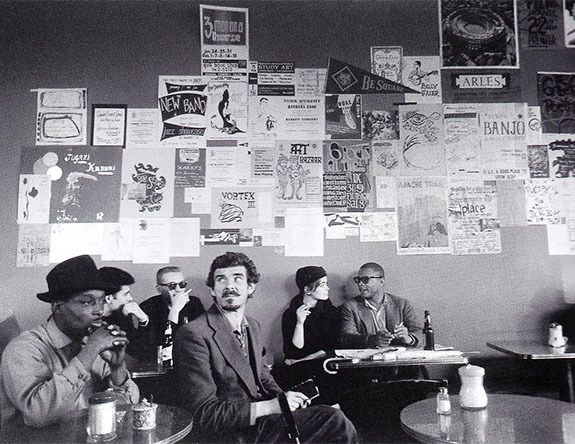
Co-Existence Bagel Shop, San Francisco, CA. 1950’s
Alongside, the GI Bill gave countless soldiers coming home from WWII in the mid-40’s (and the Korean War of the early 50’s) the means to an education, often an art education. Sometimes it was a good way to express one’s take on the “military industrial complex” that President Eisenhower so eloquently described when he left his time in office. Nearby, on Chestnut Street, the California School of Fine Arts (which eventually became the San Francisco Art Institute) had long been a refuge for artists to try new things, a place to germinate ideas, a shelter from the storm as it were.
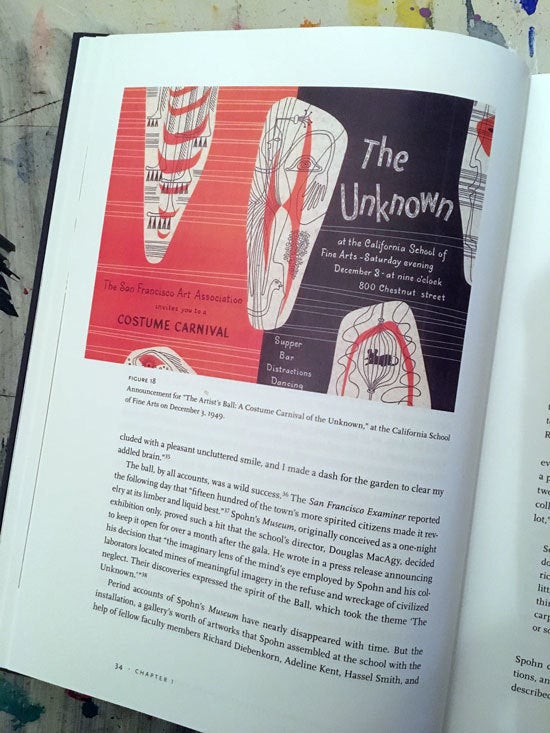
Page 34 of “Welcome to Painterland” by Anastasia Aukeman, featuring an announcement for “The Artist’s Ball: Costume Carnival of the Unknown”.
Then, as now, much of the citizenry was afraid of the unknown, of anyone different from themselves. As evidenced by history, fear robs people of their independence, their dignity, their voice, and sometimes, their vote. If you looked different, if you didn’t buy into the bullshit, didn’t believe everything you read or heard on the radio, or increasingly on TV, you had to keep your friends close, your enemies closer, as they say.
Along around 1957 an artist named Bruce Conner arrived in the Bay Area from the midwest - Wichita, to be exact - and decided he wanted to be a part of the art scene that had been gathering for many years around Fillmore Street (near Filbert) - a mile or two west down Broadway from North Beach. He wanted protection for his ideas, his dreams, and to live among the artists there.

Bruce Conner in his studio, right around the time he arrived in San Francisco from Wichita, Kansas, ca. 1958-59.
Quickly upon arriving, along with Michael McClure, Conner formed the Rat Bastard Protective Association. As Jack Foley puts it in his book “Oh, Her Blackness Sparkles!” “To call someone a “rat bastard” is to insult him. [McClure had heard someone using the term and reported it to Conner.)...A “bastard” is an illegitimate person...”
[The Rat Bastard Protective Association] was Bruce Conner’s idea. He called me up and said, “Hey, you guys, want to belong to a society?” “We said, “Oh, yeah, sure.” and he named it that. Then we had little badges printed up. We had two or three “meeting” parties. Once was at Fred Martin’s house, one was at Bruce Connor’s house, and that was that. The point was that there really was no point. And that was part of the attitude at that time. A lot of us used rats in our images. I certainly did. That went along with the literally ratty objects that we all used. The rat is an ominous creature, on that most people will do anything to avoid. And here [we] almost glamorize it. We were all so young.” Joan Brown
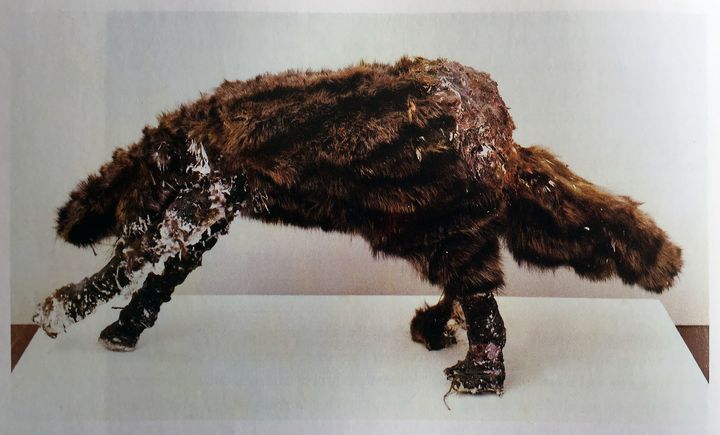
Joan Brown/Fur Rat, 1961 (Wood, chicken wire, plaster, string, nails, and racoon fur)
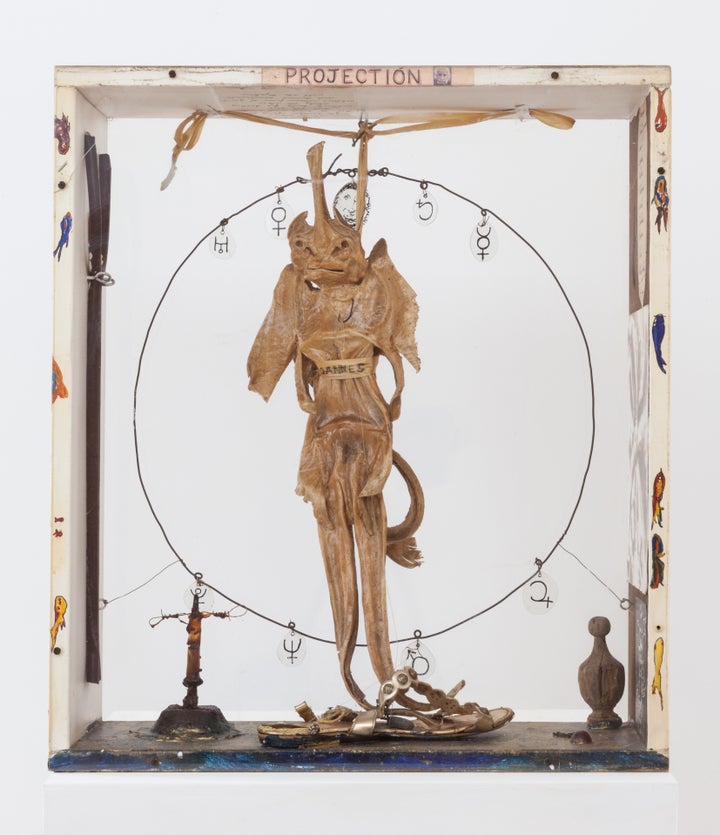
George Herms/Pisces Box, 1965-66
Anastasia Aukeman wrote the exquisitely bound, thoroughly researched and lucidly definitive history of this group at that time, “Welcome to Painterland: Bruce Conner and the Rat Bastard Protective Association”. She describes how local artists - and some from as far away as New York City - lived and worked in and around 2322 Fillmore Street, a building that the infamous poet/historian Michael McClure came to call Painterland.
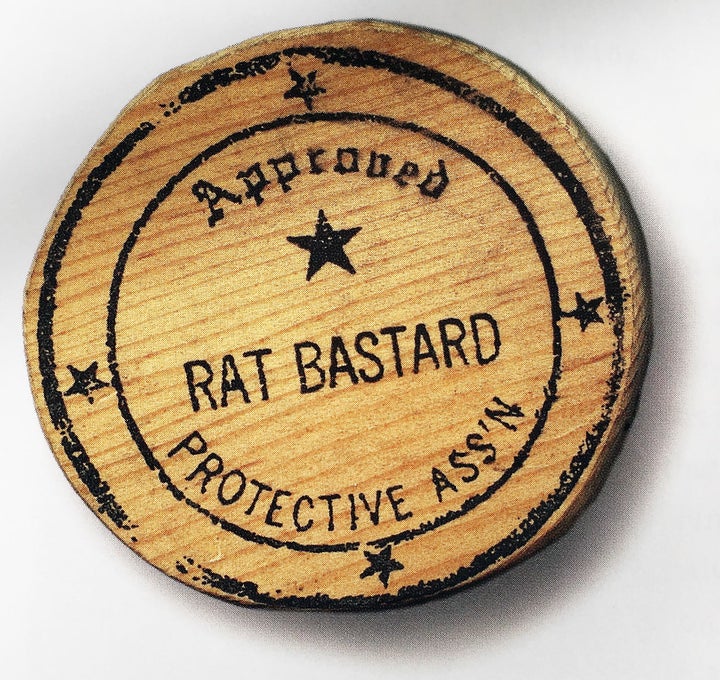
Back of the “Rat Bastard Protective Ass’n” stamp, created ca. 1957-58.
Following the older semi-figurative artists who made up the neighborhood, later artists included Bruce, Jay De Feo, Joan Brown, Wallace Berman, Wally Hedrick, Bob Branaman, George Herms, Ed Moses, Manuel Neri, and filmmakers such as Stan Brackage and others. Whenever possible, they showed in galleries such as the King Ubu Gallery, the Six Gallery, Spatsa, the Batman Gallery. Most were open only a short time, and often at haphazard hours, and only rarely did work sell. Partly because there were no strings attached, no commercial imperative, they showed what they wanted to.
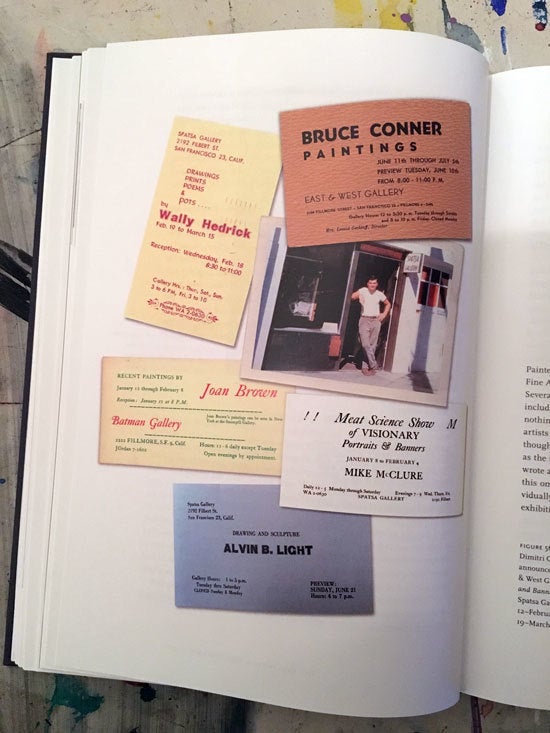
Various Gallery announcements from the period. Page 102, Figure 56 from “Welcome to Painterland” by Anastasia Aukeman.
That in turn allowed the artists in this scene to create experimental work that often jumped off the walls - in montage, assemblage, found materials and combined techniques that could leave their audiences dumbfounded - or elated. The work was spontaneous, in the moment, and temporally sensitive - it could be reworked when circumstances changed - if it even survived. There was context for this direction in terms of art history and among the artists - the Dadaists of the early teens and 20’s, and the Surrealists a bit later, for example - but that kind of work was not well known to the public on the West Coast, and it shocked them. It had almost nothing to do with the Abstract Expressionist ilk of the East Coast at the time which had by that time become internationally known. Aukeman says of all the great artists she researched for the book, aside from Conner and DeFeo, she arrived at a special fondness for Joan Brown’s work.
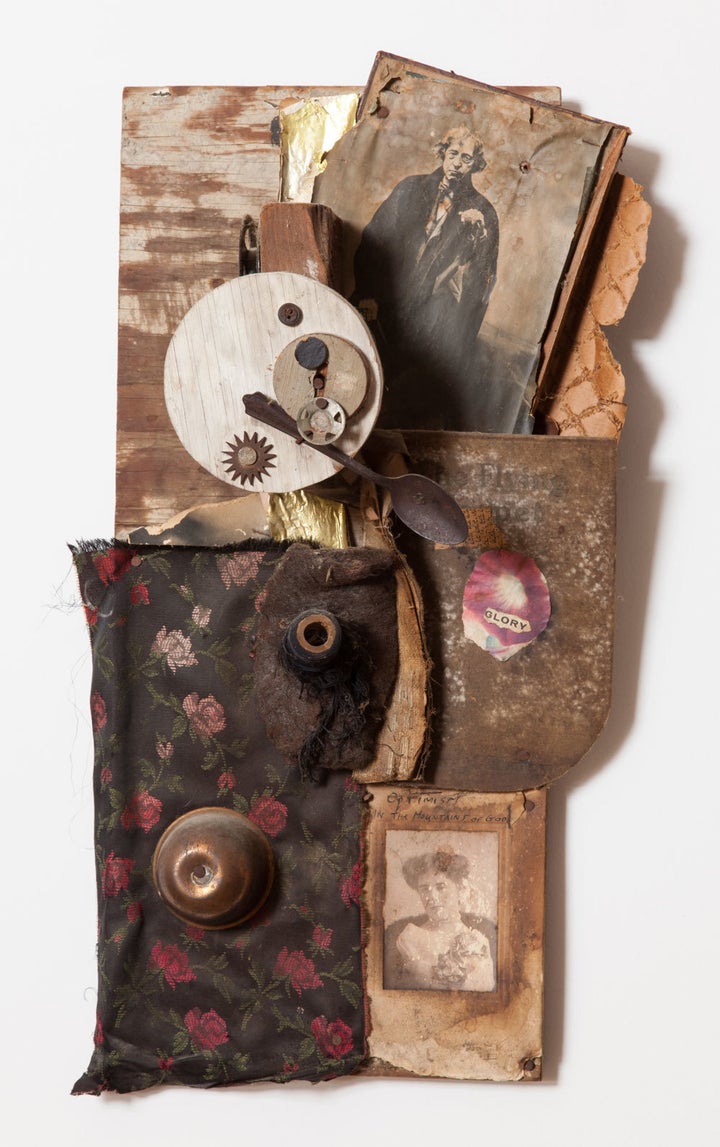
George Herms/Untitled (Glory), c. 1960
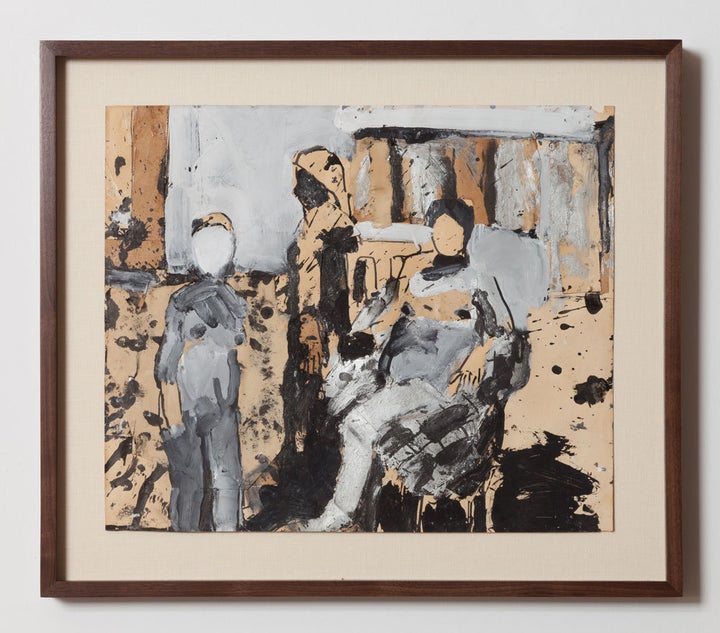
Joan Brown/Untitled (Three Figures), 1962
Bob Branaman, an artist friend I’ve known since the very early 90’s, lived in the neighborhood, visited Painterland often, and showed work in the galleries. He was a longtime friend of Bruce Conner, and describes him with a chuckle as “very competitive...” Conner would plaster the “Rat Bastard” seal all over the place, a sort of ownership of the neighborhood - a precursor to the modern-day tagger perhaps. When it came time to mount his first solo show at the Batman Gallery, he painted the walls black to accentuate the emotive nature of his work.
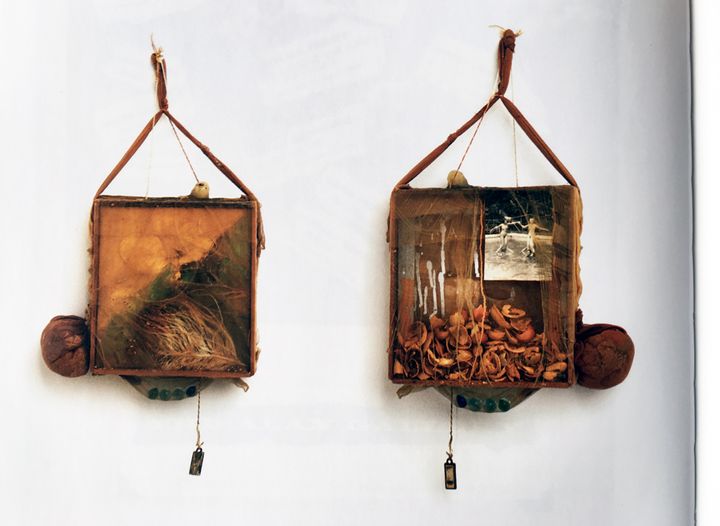
Bruce Conner, RATBASTARD 2, 1958 (recto and verso). Wood, nylon, twine, candle, glass marbles, paint, nutshells, photographic reproduction, metal charm, string, feather, sequins)
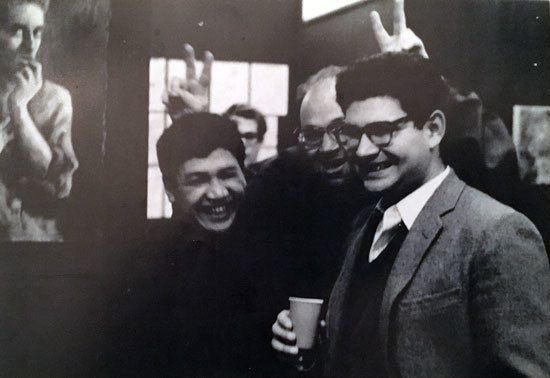
Carlos Villa (left), Art Grant (center), Manuel Neri (right) in the Batman Gallery. Portrait of Robert Ronnie Branaman at left.
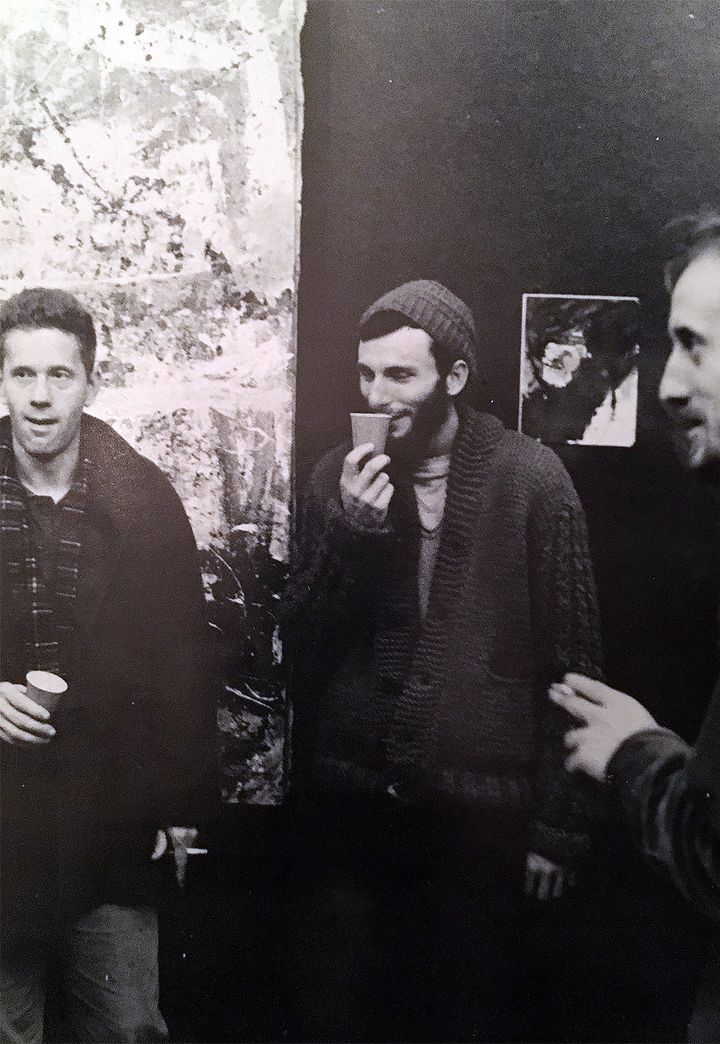
George Herms (center) and Bob Branaman (right) at Batman Gallery, ca. 1960.
One of the artists, Jay DeFeo, took her personal sense of place - of her love of Painterland - deeply to heart, and into her work. The wall on which she worked was beautifully lit from both sides. She considered this exquisite light crucial to viewing the work. She is reknowned for her monumental work The Rose, which is not so much a painting as a sculpture, a 3 dimensional mixture of found detritus using paint as it’s binder, it’s glue. Her bill for paint eventually came to over $5,000 - a phenomenal cost in 1950’s prices - and the painting ended up weighing over a ton. Walter Hopps, who eventually founded Ferus Gallery and premiered Marcel Duchamp’s works on the West Coast (his work a definitive precedent to these artists) found DeFeo’s work, including The Jewel, which was started in 1958, months before The Rose, “...a central icon of archetypal imagery.”
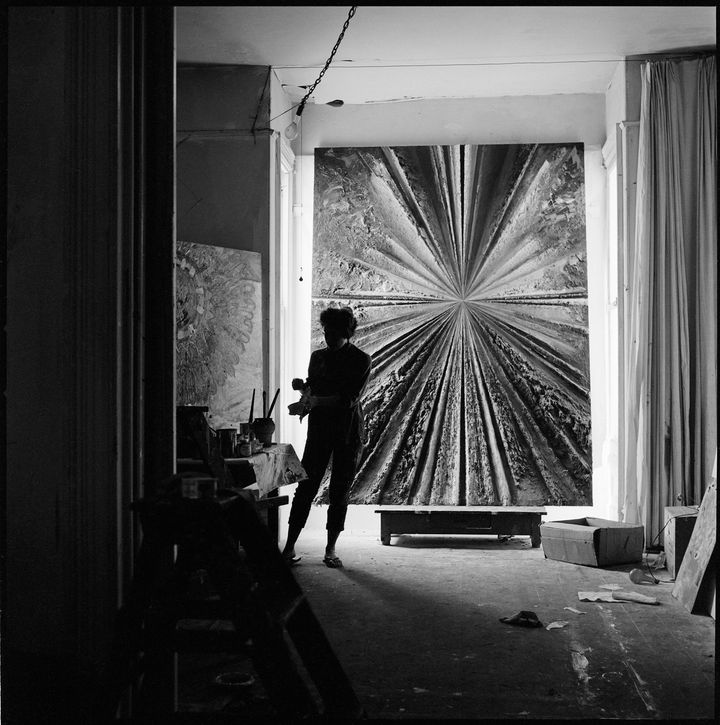
Jerry Burchard/Jay DeFeo working on Deathrose, c. 1958
Branaman relates the time he and McClure visited the work - seemingly always in progress - and Bob was so blown away by the painting that he threw a full pack of cigarettes at the center of it and left. “We were into letting things happen spontaneously, without thinking about them first, in those days...” It was an emotional action of reverence - DeFeo was universally admired by the Association artists.
And of course, as alway seems to be the case, more people found the neighborhood interesting, cool, desireable, and moved in. And so in 1965 the artists were evicted. Jay DeFeo had continued to work on The Rose all during this time - over 7 years. Aside from it’s emotional gravity, DeFeo’s “Rose” was so monumental a hole had to be cut in the wall to allow a crane to lower it to a waiting truck while DeFeo watched from the balcony.
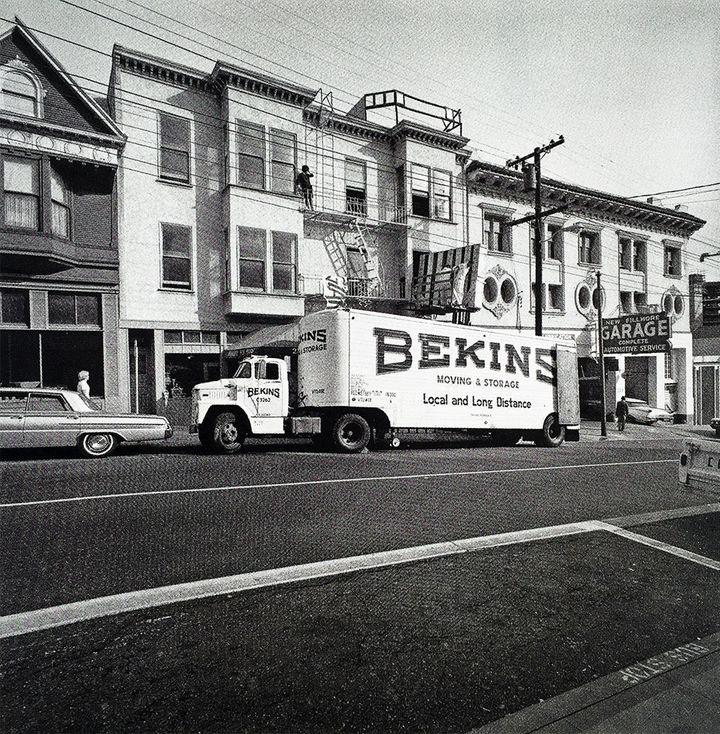
Bekins Moving & Storage workers remove The Rose from Jay DeFeo’s studio at 2322 Fillmore Street, San Francisco, November 9, 1965.
Bruce Conner was there that day - November 9, 1965 - and made a film about the move. He describes very vividly how deeply involved Jay was with her work, and how the lead in the paint led her to “go a little crazy” and became in a real sense the end of an era for her and for the artists in her circle. When Conner filmed her that day, he worried whether DeFeo would jump out the window after her work, as captured so vividly in the last frame of the film.
The piece was almost forgotten, hidden behind a false wall, until 1995 when the Whitney Museum undertook a major restoration of the piece. By that time DeFeo had been dead for several years - but as she related to Leah Levy, Director and Trustee of the Jay DeFeo Trust, she had a vision, she knew it would always find a home where it could be appreciated and loved, and that one day in another life she’d sidle up next to someone admiring the work and tap them gently on the shoulder and say “I did that.”

Jerry Burchard/Jay DeFeo working on The Jewel, c. 1958.
Bob relates the time later in life that, at a museum show in Wichita, he had his work in his hands while a collector was talking to Bruce. The collector then asked to see Bob’s painting, at which point Conner grabbed the painting and ran to the back of the gallery and hid it away, saying “You’re here to see my work, not Bob’s”. Perhaps that’s a testament to the quality of the work Branaman does. Bob, of course forgave him and in hindsight considers it a “...compliment, of sorts.”
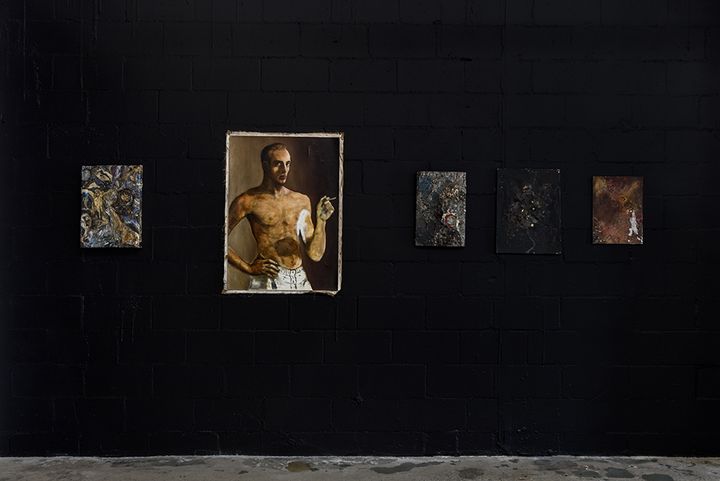
Robert Branaman Installation; Courtesy of the Artist and the Landing, Los Angeles
So, it came as a nice surprise when I heard that many of the Rat Bastard Protective Association artists were going to have a show - with many of the works seen for the first time since 1958 - at the new Landing Gallery on Jefferson Blvd. (near La Brea) in an industrial zone at the new train stop in Los Angeles. The show is relevatory, expansive, unique. While reminding us of us how far we’ve come, it most importantly implores us as artists and a community of citizens to continually protect and defend our rights, of freedom of thought, speech, expression, and art.
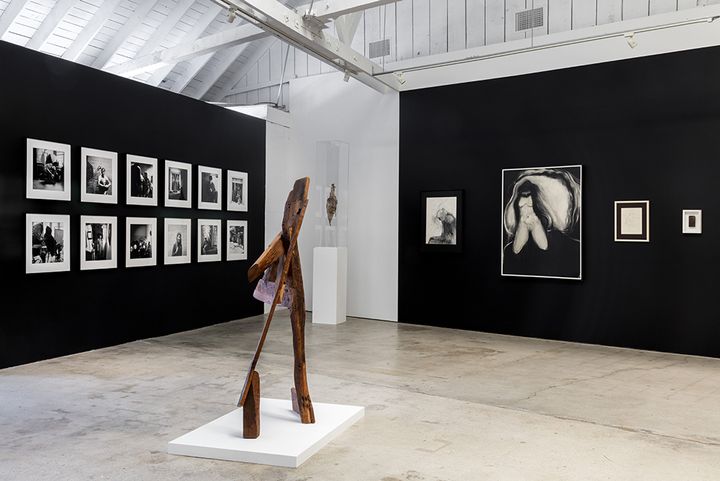
Installation Shots; Courtesy the Artists and the Landing, Los Angeles
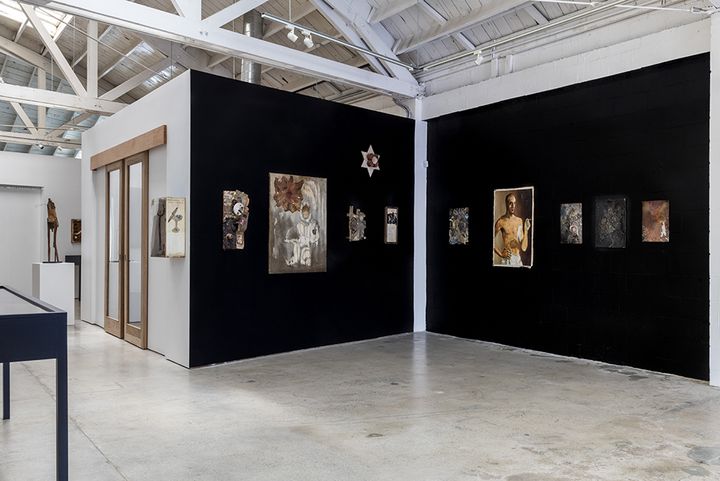
Installation Shot; Courtesy the Artists and the Landing, Los Angeles
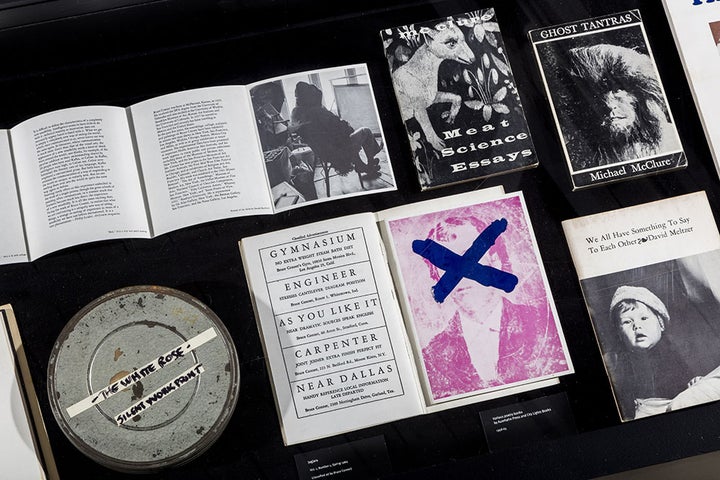
Ephemera vitrine details; Courtesy the Artists and Landing, Los Angeles
Gallery Director Sam Parker says, “It’s surprising the art has been so preserved, given the intents of the artists working with assemblage, who felt the work they were making was ephemeral. Particularly Conner, who envisioned his assemblages being continually altered throughout the course of their life...”
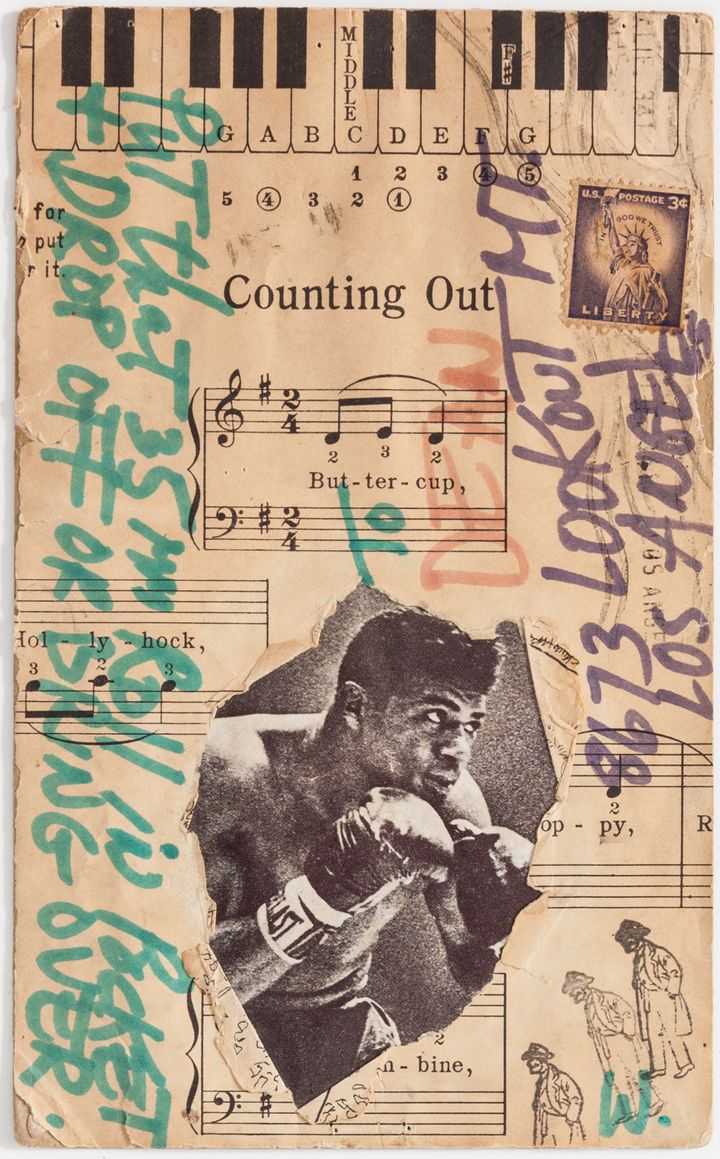
Wallace Berman/Untitled mailer,, 1962
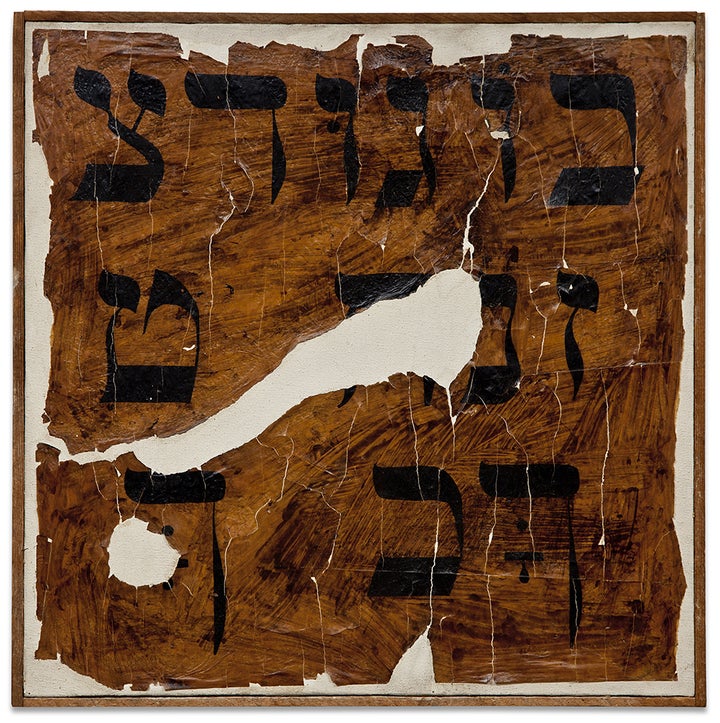
Wallace Berman/Untitled Parchment Piece, 1957
“I could add that many visitors to the exhibition have wondered if such a strong, communal spirit could exist in the contemporary art community. It feels as though today, so many artists are islands, either working independently and for themselves, or in a large-scale artistic production that employs multiple persons in service of a singular vision. The incredible thing about the Rat Bastards is the camaraderie and influence on each other; a sense of working collectively and not competitively. But I’m sure it looks to us now much rosier than it really may have been.” Sam Parker/Director, the Landing, Los Angeles

Juri Koll (left) and Bob Branaman with original Bob Branaman portrait from the 50’s @ the Landing, Los Angeles, October 1, 2016.
In Los Angeles, as anywhere artists work, to protect your inner/original self, your work, your studio, your sense of place, is unfortunately a daily, cyclical requirement. That comes with a responsibility to move beyond the fear of the unknown, the uncertainty and even hate that presents itself to us, especially today.
As artists we are constantly working, building up neglected neighborhoods with blood, sweat, and tears, only to have them ripped from our hands and hearts when people notice us, and discover that we’ve become a community, a nice place to put down roots. In older cities such as Venice, which has over a century of history as a inspirational haven for artists - or newer “destinations” in outlying areas - the folks that come to live among us artists would do well to remember why they moved in, and what attracted them here to begin with.
It’s our sense of place, of community, of open association, our unique individuality that allows us to think freely, thereby binding us all together for the common good. This reality should be rewarded, preserved, and protected, just as we protect our works of art.
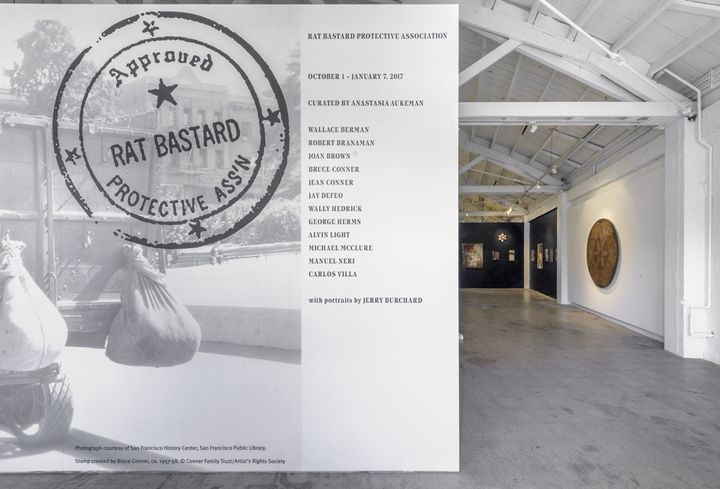
Title/mural wall, and installation shots; Courtesy of the Landing, Los Angeles
The Rat Bastard Protective Association exhibit is on view until January 7, 2017, at the Landing, located at 5118 W. Jefferson Blvd., Los Angeles, California 90016. For information and hours: 323-272-3194.
Sunday, December 11 at 6pm at the Landing there will be a film screening. Films by Robert Branaman, Paul Beattie, and a staged reading of Michael McClure’s “The Beard” (1965), directed by Russ Tamblyn.
Copies of “Welcome to Painterland” by Anastasia Aukeman (ISBN: 9780520289451) are available at the gallery.
“O Her Blackness Sparkles!” by Jack Foley, featuring the photographs of James O. Mitchell is from the 3300 Press, San Francisco, CA. (ISBN: 0-9646017-1-0).
The San Francisco Museum of Modern Art organized “Bruce Conner: Its All True”, the first major retrospective of Conner’s work, which is on view at the museum until January 22, 2017.
